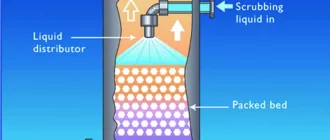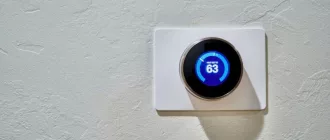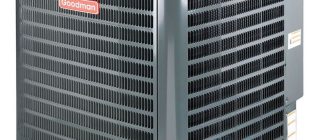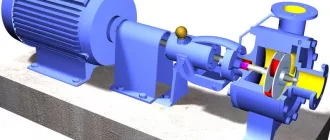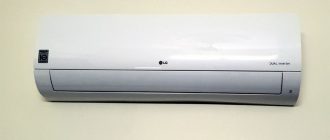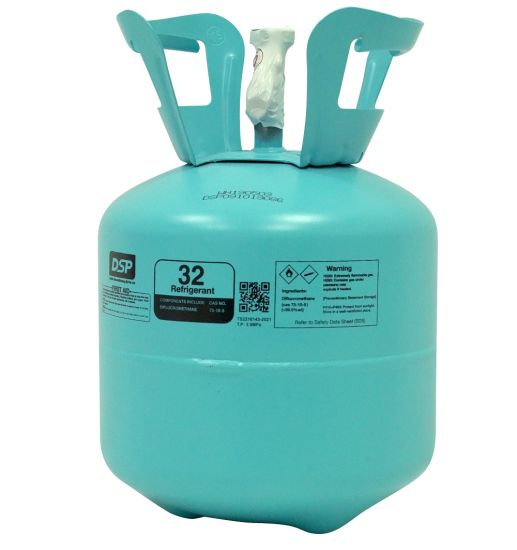
What is replacing 410A refrigerant?
The regulations surrounding the use of 410A refrigerant in air conditioning systems have led to a flurry of research and development in the industry. As this environmentally-friendly alternative is being phased out due to its high Global Warming Potential (GWP), the search for a suitable replacement is in full swing.
Replacing 410A is an important task for the air conditioning industry, as it is commonly used in residential, commercial, and industrial cooling systems. The replacement refrigerant needs to have a significantly lower GWP and be compatible with existing equipment, ensuring a smooth transition.
The industry is exploring a range of alternatives to 410A, including hydrofluoroolefins (HFOs), hydrofluorocarbons (HFCs) with lower GWPs, and natural refrigerants such as hydrocarbons. Each alternative has its own advantages and disadvantages, requiring careful consideration before implementation.
Understanding the Need for a Replacement
The need for a replacement for 410a refrigerant is increasing due to environmental concerns and changing regulations in the industry. 410a has been widely used in air conditioning and refrigeration systems for many years, but it has a high global warming potential (GWP) and contributes to climate change. As a result, there is a growing demand for an alternative that is more environmentally-friendly and meets the latest regulatory requirements.
Replacing 410a with a more sustainable refrigerant is crucial to reduce greenhouse gas emissions and mitigate the impact on the environment. The HVAC industry recognizes the need for a replacement and is actively researching and developing alternatives that have lower or zero GWP. These alternatives aim to provide the same level of performance and efficiency as 410a while minimizing the environmental impact.
In addition to environmental concerns, changing regulations are further driving the need for a replacement. Governments and regulatory bodies are implementing stricter regulations to limit the use of high-GWP refrigerants and encourage the adoption of more sustainable options. These regulations aim to protect the ozone layer and reduce the overall carbon footprint of the HVAC industry.
The search for a replacement refrigerant is an ongoing process in the industry, with manufacturers and researchers exploring various alternatives. Some potential alternatives include R32, R290, and R1234ze, which have significantly lower GWP compared to 410a. These alternatives are being tested and evaluated for their compatibility, safety, and performance in different applications.
In conclusion, the need for a replacement for 410a refrigerant is driven by environmental concerns and changing regulations. The HVAC industry is actively working towards finding alternatives that are more environmentally-friendly and comply with the latest regulations. By replacing 410a with a more sustainable refrigerant, the industry can contribute to reducing greenhouse gas emissions and addressing climate change.
The Impact of 410A Refrigerant on the Environment
The 410A refrigerant has had a significant impact on the environment and the air conditioning industry. This refrigerant, also known as Puron, was introduced as an alternative to the ozone-depleting R-22 refrigerant, commonly used in air conditioning systems.
Unlike R-22, 410A is considered to be environmentally-friendly. It does not contribute to ozone depletion and has a lower global warming potential (GWP). As a result, it has gained popularity in the industry and is widely used in residential and commercial air conditioning systems.
The use of 410A refrigerant has helped reduce the environmental impact of air conditioning systems. It has played a crucial role in complying with regulations aimed at phasing out ozone-depleting substances and reducing greenhouse gas emissions.
However, despite its benefits, there is a growing need for replacing 410A refrigerant. While it is more environmentally-friendly than R-22, it still has a high GWP. Researchers and manufacturers are actively exploring alternative refrigerants with even lower GWP to further minimize the environmental impact of air conditioning systems.
Replacing 410A refrigerant with a lower GWP alternative is important for achieving sustainability goals and meeting stricter regulations. It can help reduce greenhouse gas emissions and contribute to efforts to mitigate climate change.
As the industry continues to evolve, it is crucial to prioritize the development and adoption of alternative refrigerants that are both energy-efficient and environmentally-friendly. This will ensure that air conditioning systems contribute to a more sustainable future, while also providing the comfort and cooling that we rely on in our daily lives.
The Global Effort to Reduce Harmful Emissions
The global effort to reduce harmful emissions has led to increased regulations on the use of certain refrigerants in air conditioning systems. One such refrigerant is 410A, which has been widely used in recent years but is known to have a high global warming potential (GWP).
In response to the need for a more environmentally-friendly alternative, researchers and manufacturers have been developing replacement options that have a lower GWP while still maintaining the necessary cooling properties. These alternatives aim to reduce the impact of air conditioning systems on the environment and help mitigate the effects of climate change.
One alternative to 410A refrigerant is R32, which has a lower GWP and is considered more environmentally-friendly. R32 has been gaining popularity as a replacement for 410A in recent years due to its improved efficiency and lower impact on the ozone layer. However, it is important to note that R32 is still a synthetic refrigerant and needs to be handled with care.
Another alternative being explored is the use of natural refrigerants such as propane and ammonia. These substances have significantly lower GWPs and are considered more sustainable options. However, their flammability and toxicity present additional challenges in terms of safety precautions and regulations.
The transition from 410A to alternative refrigerants is not a simple process and requires careful consideration. It involves replacing the existing infrastructure, including compressors, coils, and other components, to ensure compatibility with the new refrigerant. Additionally, manufacturers and technicians need to be trained on handling and servicing the new refrigerants safely.
Despite these challenges, the global effort to reduce harmful emissions and find environmentally-friendly alternatives is an important step towards mitigating the impact of air conditioning systems on the environment. By phasing out refrigerants with high GWPs and replacing them with alternatives, we can work towards a more sustainable and greener future.
Exploring the Alternatives
With the implementation of stricter environmental regulations, the need for an alternative to 410A refrigerant has become imperative for the industry. The replacement of 410A is necessary due to its high global warming potential (GWP).
The industry has been actively researching and developing environmentally-friendly alternatives to replace 410A. These alternatives are designed to have a lower GWP and minimize the impact on the ozone layer. Several promising replacements are currently being considered and tested.
One alternative to 410A is R-32 refrigerant. R-32 has a significantly lower GWP compared to 410A and is considered to be more energy efficient. It has already been adopted in some regions and is gaining popularity as a potential replacement.
Another alternative is hydrofluoroolefins (HFOs), which have a much lower GWP compared to traditional hydrofluorocarbons (HFCs) like 410A. HFOs have a short atmospheric lifetime, which reduces their impact on climate change. They are also non-toxic and non-flammable, making them a safer option for the industry.
The development and adoption of these alternatives are vital for the industry’s sustainable future. The process of replacing 410A with these environmentally-friendly refrigerants requires careful consideration and testing to ensure safety, efficiency, and reliability.
As the industry continues to explore the alternatives, it is important to prioritize the development of solutions that not only meet environmental regulations but also deliver optimal performance. By embracing these new refrigerants, the industry can contribute to a greener and more sustainable future.
The Transition to R-32 Refrigerant
In response to the need for a more environmentally-friendly alternative to 410A refrigerant, the air conditioning industry has been exploring various options for replacement. One of the most promising alternatives is R-32 refrigerant.
R-32 is a hydrofluorocarbon (HFC) refrigerant with significantly lower global warming potential (GWP) compared to 410A. It has a GWP of only 675, which is much lower than the GWP of 410A, which is around 2,088. This makes R-32 a much more eco-friendly choice.
In addition to its lower GWP, R-32 also offers other advantages. It is a single-component refrigerant, which means it is easier and less expensive to handle and transport. It is also more energy efficient, leading to lower electricity consumption and reduced greenhouse gas emissions.
However, the transition to R-32 is not without challenges. The use of R-32 is subject to regulations and safety standards because it is classified as a mildly flammable refrigerant. This means that proper handling and storage procedures must be followed to ensure safety in the industry.
Despite the challenges, the industry is embracing R-32 as a viable replacement for 410A refrigerant. Manufacturers are developing air conditioning systems that are compatible with R-32, and many new products are already available on the market.
In conclusion, the transition to R-32 refrigerant is an important step for the air conditioning industry in its efforts to find a more environmentally-friendly alternative to 410A. With its lower GWP and other advantages, R-32 is a promising choice for the industry as it looks to reduce its impact on the environment.
The Benefits of R-454B as a Replacement
As the industry seeks for a replacement for 410A refrigerant, R-454B emerges as a promising alternative. This environmentally-friendly refrigerant offers several benefits for air conditioning systems.
R-454B is compliant with existing regulations and standards, making it a suitable replacement for 410A. It has a low global warming potential (GWP) of less than 500, which makes it significantly more environmentally-friendly compared to its predecessor.
One of the key advantages of R-454B is its energy efficiency. It has a higher cooling capacity and a lower compressor discharge temperature compared to 410A. This means that air conditioning systems using R-454B can achieve the same level of cooling with less energy consumption.
Moreover, R-454B has a similar thermodynamic performance to 410A, which means that retrofitting existing air conditioning systems to use R-454B is a viable option. This allows for a smooth transition towards adopting a more sustainable and eco-friendly refrigerant without the need for extensive equipment replacement.
In addition to its environmental benefits, R-454B is also cost-effective. Its lower GWP allows for a reduced carbon tax, and its energy efficiency can lead to significant cost savings in the long run.
In conclusion, R-454B is a promising alternative for replacing 410A refrigerant in the air conditioning industry. Its environmentally-friendly nature, compliance with regulations, energy efficiency, and cost-effectiveness make it an attractive choice for companies looking to make their operations more sustainable and reduce their carbon footprint.
Examining the Use of Ammonia as an Alternative
The air conditioning industry is constantly searching for environmentally-friendly alternatives to replace refrigerants like 410A. One such alternative that has gained attention in recent years is ammonia.
Ammonia, also known as R717, is a naturally occurring compound that can be used as a refrigerant. It is a chemical-free option that does not contribute to ozone depletion or global warming. These characteristics make ammonia a promising alternative to 410A, which is a hydrofluorocarbon (HFC) with a high global warming potential.
While ammonia has numerous benefits, its use as a refrigerant is subject to certain regulations and safety considerations. Due to its toxicity, ammonia must be handled with care, requiring specialized training and equipment. It is crucial that the industry adheres to safety protocols when using ammonia as a refrigerant.
Despite the challenges associated with its use, many companies and organizations have already embraced ammonia as an alternative to 410A. In some applications, particularly industrial and commercial cooling systems, ammonia has proven to be a highly efficient and cost-effective refrigerant.
The move towards ammonia as a replacement for 410A aligns with the industry’s commitment to reducing greenhouse gas emissions and combating climate change. As stricter regulations are implemented to limit the use of HFCs, the demand for alternatives like ammonia is expected to rise.
In conclusion, ammonia shows promise as an alternative to 410A refrigerant. Its environmentally-friendly nature, coupled with its efficiency and cost-effectiveness, make it an attractive option for replacing 410A in various cooling systems. However, it is essential that proper safety measures are followed to ensure the responsible and safe use of ammonia as a refrigerant.
Evaluating the Performance of Replacements
As the HVAC industry looks to find a replacement for the widely used refrigerant 410A, evaluating the performance of alternative options becomes crucial. With stricter regulations aimed at reducing the environmental impact of air conditioning systems, finding an environmentally-friendly replacement for 410A is essential.
When evaluating the performance of replacements, several factors must be considered. One of the main considerations is the efficiency of the alternative refrigerant. Energy efficiency is a key aspect of air conditioning systems, and any replacement must meet or exceed the performance of 410A to ensure optimal cooling.
Another important factor to evaluate is the compatibility of the replacement refrigerant with existing equipment. Many HVAC systems are designed specifically for use with 410A, so the replacement must be compatible with these systems without requiring significant modifications or retrofits.
Furthermore, the environmental impact of the replacement refrigerant must be taken into account. The goal is to find an alternative that has a lower global warming potential (GWP) and ozone depletion potential (ODP) than 410A. This will help to minimize the overall impact of air conditioning systems on the environment.
Lastly, the cost of the replacement refrigerant is another important consideration. The HVAC industry needs to find a replacement that is not only environmentally-friendly but also cost-effective. This will ensure that the adoption of the alternative refrigerant is feasible and financially viable.
In conclusion, evaluating the performance of replacements for 410A refrigerant is essential for the HVAC industry. Considering factors such as efficiency, compatibility with existing equipment, environmental impact, and cost will help the industry find a suitable alternative that meets both regulatory requirements and the needs of the industry.
Comparing Energy Efficiency of Various Alternatives
In the search for a replacement refrigerant for 410A, the industry has explored several alternatives. One of the key considerations in choosing a replacement is its energy efficiency. Regulations are pushing for more environmentally-friendly options that not only have a lower global warming potential (GWP), but also perform efficiently. Here are some of the alternatives being considered:
- R-32 (difluoromethane): This alternative has been gaining popularity due to its lower GWP and higher energy efficiency compared to 410A. It is being used in several air conditioning systems and has proven to be effective.
- R-452B (difluoromethane/1,1,1,2-tetrafluoroethane): This blend offers a lower GWP and similar energy efficiency to 410A. It is being considered as a potential drop-in replacement for existing systems.
- R-454B (difluoromethane/2,3,3,3-tetrafluoropropene): Another blend that has a lower GWP and similar energy efficiency to 410A. It is being tested in various applications and shows promising results.
- R-454C (pentafluoroethane/2,3,3,3-tetrafluoropropene): This blend offers a significantly lower GWP compared to 410A but may have slightly lower energy efficiency. It is still under development and further research is being conducted.
While each alternative has its own advantages and disadvantages, it is clear that the industry is actively searching for a replacement refrigerant that not only meets regulatory requirements but also maintains or improves energy efficiency. By comparing these alternatives, manufacturers and users can make informed decisions to achieve a balance between environmental considerations and performance.
The Impact of Replacement Refrigerants on Cooling Capacity
When it comes to replacing refrigerants in the air conditioning industry, one important factor to consider is the impact on cooling capacity. The cooling capacity refers to the amount of heat that a refrigerant can remove from an area, which directly affects the effectiveness of the air conditioning system.
With the phase-out of traditional refrigerants like R-22 and the tightening of regulations on 410A refrigerant, the industry has been seeking alternative refrigerants that can provide efficient cooling without compromising the cooling capacity.
The replacement refrigerants need to have properties that allow them to absorb and release heat effectively, ensuring that the air conditioning system can cool indoor spaces to the desired temperature. These alternative refrigerants must also meet environmental regulations and have a low global warming potential (GWP), as sustainability is a growing concern in the industry.
The effective replacement of 410A refrigerant with alternatives requires careful consideration and testing to ensure that the chosen refrigerant can provide the necessary cooling capacity without causing any negative effects. Engineers and manufacturers are working towards finding the right balance between cooling performance, energy efficiency, and environmental friendliness.
Testing and evaluation are crucial in determining the cooling capacity of alternative refrigerants. This involves conducting experiments and simulations to measure how well the replacement refrigerants can cool a space at different temperatures and humidity levels. It also involves evaluating the refrigerant’s ability to maintain consistent cooling capacity over time.
The adoption of alternative refrigerants for 410A is a significant step towards reducing the environmental impact of air conditioning systems. However, it is important to ensure that the replacement refrigerants can effectively replace 410A without sacrificing cooling capacity. Only by carefully evaluating and selecting alternative refrigerants can the industry continue to provide efficient air conditioning solutions that are both environmentally friendly and effective in cooling indoor spaces.
| Alternative 1 | High | Low GWP |
| Alternative 2 | Moderate | Low GWP |
| Alternative 3 | High | Low GWP |
Safety Considerations for Replacement Refrigerants
When replacing the 410A refrigerant with an alternative, there are important safety considerations that need to be taken into account.
First and foremost, it is crucial to comply with all applicable regulations and guidelines set forth by the industry. These regulations are in place to ensure the safe handling and usage of replacement refrigerants.
One of the key safety concerns is the compatibility of the replacement refrigerant with the existing air conditioning system. It is essential to choose a replacement refrigerant that is compatible with the system components, such as the compressor, evaporator, and condenser. Failure to do so can lead to system malfunctions or even catastrophic failures.
Another safety consideration is the toxicity and flammability of the replacement refrigerant. It is important to select a refrigerant with low toxicity and flammability characteristics to minimize potential risks to human health and safety. Additionally, awareness of proper handling and storage procedures is essential to prevent accidents and mitigate any potential hazards.
Furthermore, it is essential to consider the environmental impact of the replacement refrigerant. The chosen alternative should have a low global warming potential (GWP) and ozone depletion potential (ODP) to minimize its contribution to climate change and ozone layer depletion.
In conclusion, when replacing the 410A refrigerant with an alternative, safety should be the top priority. Compliance with regulations, consideration of system compatibility, toxicity, flammability, and environmental impact are all crucial factors to ensure the safe and effective use of replacement refrigerants in air conditioning systems.
Understanding the Flammability and Toxicity Risks
In the process of replacing 410a as the primary refrigerant used in the air conditioning industry, it is crucial to consider the potential flammability and toxicity risks associated with the alternatives. While the industry is looking for more environmentally-friendly options, safety should remain a top priority.
One alternative to 410a is the use of hydrofluoroolefin (HFO) refrigerants. HFOs have gained popularity due to their low global warming potential and ozone depletion potential. However, it is important to note that some HFO refrigerants can carry the risk of flammability. While the industry has taken steps to minimize these risks through the development of HFO blends, understanding the characteristics and safety precautions is still essential.
Another alternative to 410a is the use of hydrocarbon refrigerants. These refrigerants, such as propane and isobutane, have excellent thermodynamic properties and zero ozone depletion potential. However, they are highly flammable and require careful handling and installation to prevent accidents.
When considering the toxicity risks of alternatives to 410a, it is important to note that different refrigerants vary in their toxicity levels. Most HFO and hydrocarbon refrigerants have low levels of toxicity, but proper procedures and precautions should still be followed to ensure worker and user safety.
Overall, understanding the flammability and toxicity risks associated with the replacement of 410a is vital for the industry to make informed decisions regarding the choice of an alternative refrigerant. Regular training and adherence to safety guidelines should be emphasized to minimize the potential risks and ensure a smooth transition to more environmentally-friendly options.
Handling and Storage Requirements for Alternatives
As the demand for environmentally-friendly refrigerants continues to grow, the HVAC industry is actively exploring alternatives to replace the widely used 410A refrigerant. These alternatives offer a more sustainable solution for air conditioning systems while still providing effective cooling capabilities. However, it is important to understand the proper handling and storage requirements for these new alternatives to ensure their safe and efficient use.
When it comes to handling alternative refrigerants, it is crucial to follow the guidelines provided by the manufacturer. Each alternative may have unique properties and requirements, so it is important to read and understand the safety data sheets (SDS) and product specifications before use. This includes information on proper storage temperatures, pressure limits, and any special handling or transportation considerations.
Storage requirements for alternative refrigerants are also an important aspect to consider. Like any other refrigerant, alternatives should be stored in a cool, dry, and well-ventilated area. They should be kept away from open flames, excessive heat, or ignition sources to prevent any potential hazards. It is recommended to store alternative refrigerants in properly labeled and sealed containers to avoid contamination or accidental release.
In addition to proper handling and storage, it is important to train and educate HVAC technicians on the use of alternative refrigerants. They should be aware of the unique properties and safety considerations associated with these alternatives to ensure safe and effective installation and maintenance of air conditioning systems.
In conclusion, as the industry moves towards replacing the widely used 410A refrigerant, it is essential to consider the handling and storage requirements for the alternatives. By following the manufacturer’s guidelines and providing proper training to HVAC technicians, the industry can ensure the safe and effective use of these environmentally-friendly alternatives in air conditioning systems.
Regulatory Approval and Future Implementation
The air conditioning industry is faced with increasing pressure to find an environmentally-friendly replacement for the 410A refrigerant due to its high global warming potential. As a result, regulations have been put in place to limit the use of 410A and encourage the adoption of alternatives.
Several potential replacements for 410A have emerged, including R-32, R-454B, and R-454C. These alternatives have shown promising results in terms of performance and energy efficiency. However, before they can be widely adopted, they need to go through regulatory approval processes to ensure their safety and compatibility with existing systems.
Regulatory bodies around the world are actively involved in evaluating the environmental impact and safety of these alternative refrigerants. This includes assessing their global warming potential, ozone depletion potential, and toxicity levels. Once approved, these alternatives can be used as a drop-in replacement for 410A in existing air conditioning systems, reducing the need for extensive retrofitting or system replacements.
The future implementation of alternative refrigerants will also require the industry to adapt and upgrade its manufacturing and service practices. This includes training technicians on handling and servicing these new refrigerants, as well as ensuring the availability of compatible equipment and tools.
While the transition to environmentally-friendly alternatives may pose initial challenges for the industry, it is a necessary step towards reducing the environmental impact of air conditioning systems. The industry is actively working towards meeting regulatory requirements and embracing new and sustainable refrigerants to ensure a greener future.
The Role of Government Agencies in Approving Replacements
Government agencies play a crucial role in the approval process for new refrigerants that are being considered as replacements for the current industry standard, 410A. These agencies are responsible for ensuring that any alternative refrigerant being proposed meets the necessary regulations and standards set forth to protect the environment and public health.
When it comes to refrigerants used in air conditioning systems, the main concern for government agencies is the potential impact on the environment. The industry is constantly seeking alternatives that have a lower global warming potential (GWP) and reduced ozone depletion potential (ODP).
Before a potential replacement refrigerant can be approved for use, it must undergo rigorous testing and evaluation by government agencies. These tests include evaluating the compatibility of the alternative refrigerant with existing air conditioning systems, its efficiency in cooling, and its overall environmental impact.
The process typically involves conducting laboratory tests to assess the performance and safety of the alternative refrigerant. This includes evaluating its chemical properties, such as its flammability and toxicity levels. Additionally, field tests may be conducted to gather real-world data on the alternative refrigerant’s performance.
Government agencies also take into consideration the feedback and input from various stakeholders, including manufacturers, industry experts, and environmental organizations. This collaborative approach helps ensure that any approved replacement refrigerant meets the needs of the industry while also being environmentally-friendly.
Once a replacement refrigerant has been thoroughly evaluated and deemed safe and effective, government agencies will then establish regulations and standards for its use. These regulations may include guidelines on the proper handling, storage, and disposal of the alternative refrigerant to minimize any potential hazards.
The role of government agencies in approving replacements for 410A refrigerant is crucial in ensuring that the transition to alternative refrigerants is done responsibly and with the best interests of both the industry and the environment in mind.
Q&A:
What is the current status of 410A refrigerant?
Currently, 410A refrigerant is widely used in air conditioning and heat pump systems. However, due to its high global warming potential, it is being phased out in many countries.
What are the alternatives to 410A refrigerant?
There are several alternatives to 410A refrigerant, including R-32, R-452B, and R-454B. These alternatives have lower global warming potential and are considered more environmentally friendly.
Will I need to replace my existing air conditioning system if I currently use 410A refrigerant?
In most cases, you will not need to replace your existing air conditioning system if you currently use 410A refrigerant. However, you may need to retrofit or modify your system to accommodate the new refrigerant, depending on the specific alternative chosen.
Why is 410A refrigerant being phased out?
410A refrigerant is being phased out because it has a high global warming potential, contributing to climate change. Governments and regulatory bodies are implementing stricter environmental regulations, which is driving the need for more environmentally friendly alternatives.

